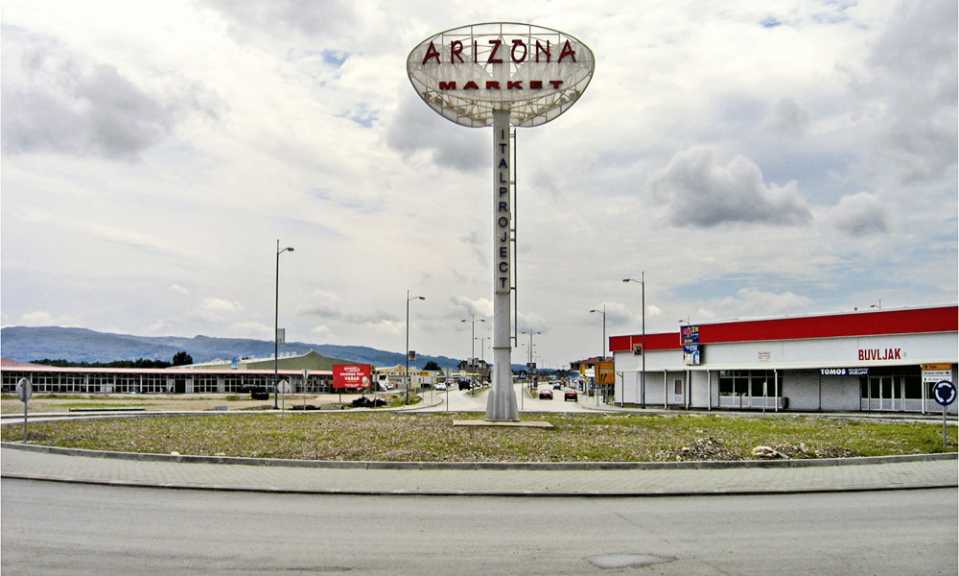
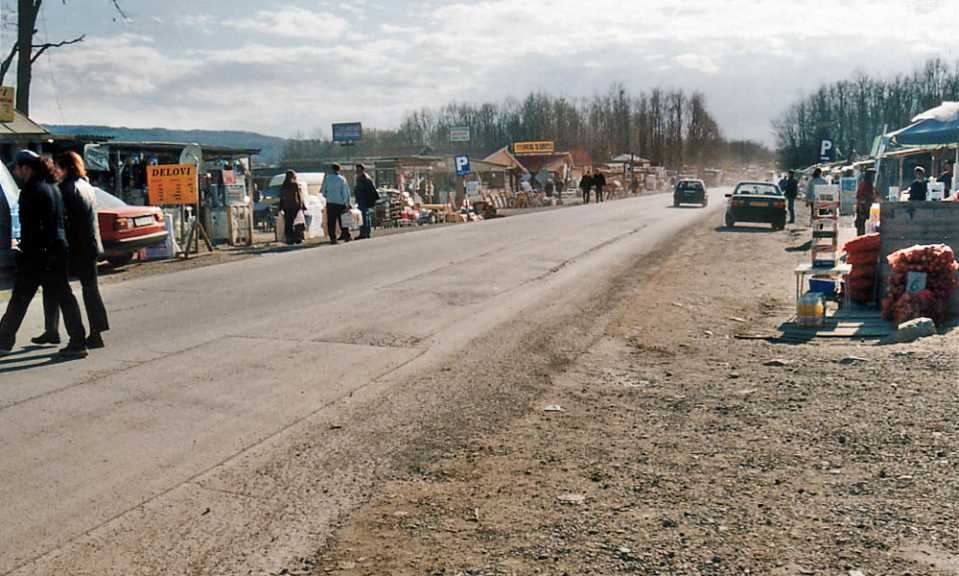
‘Arizona Road’ in 2001
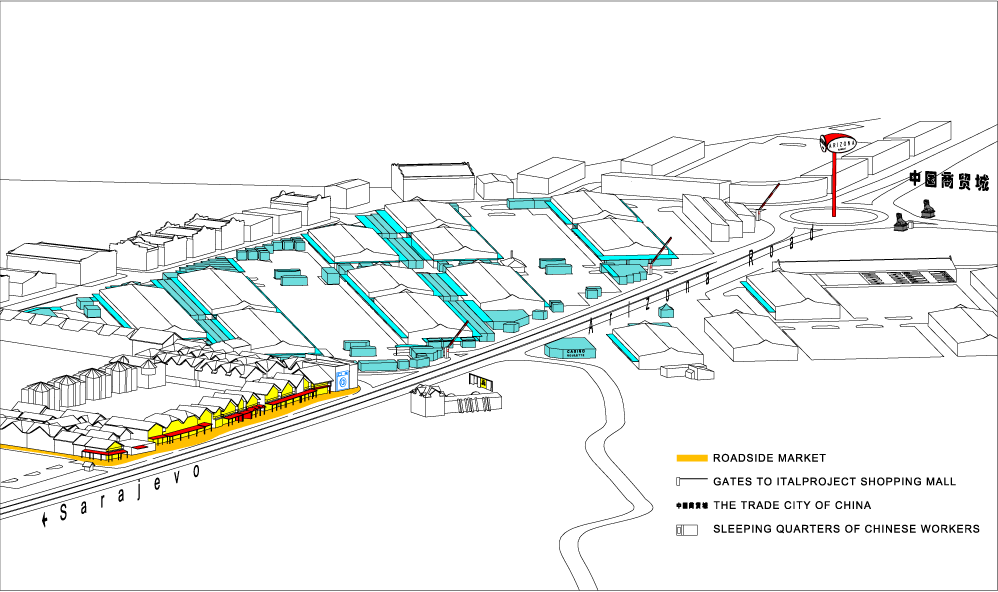
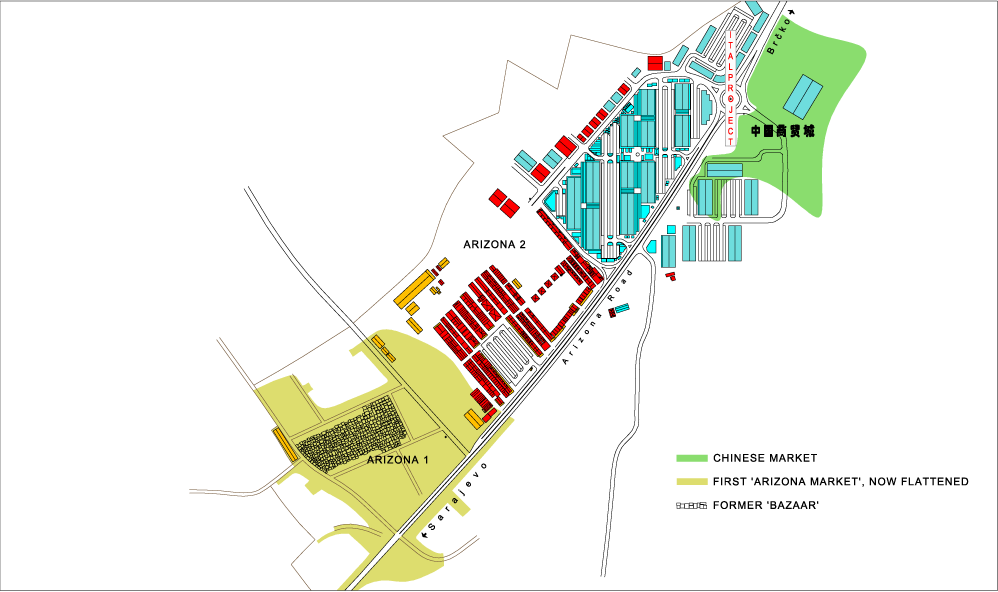
Entry to the market via metered parking lots
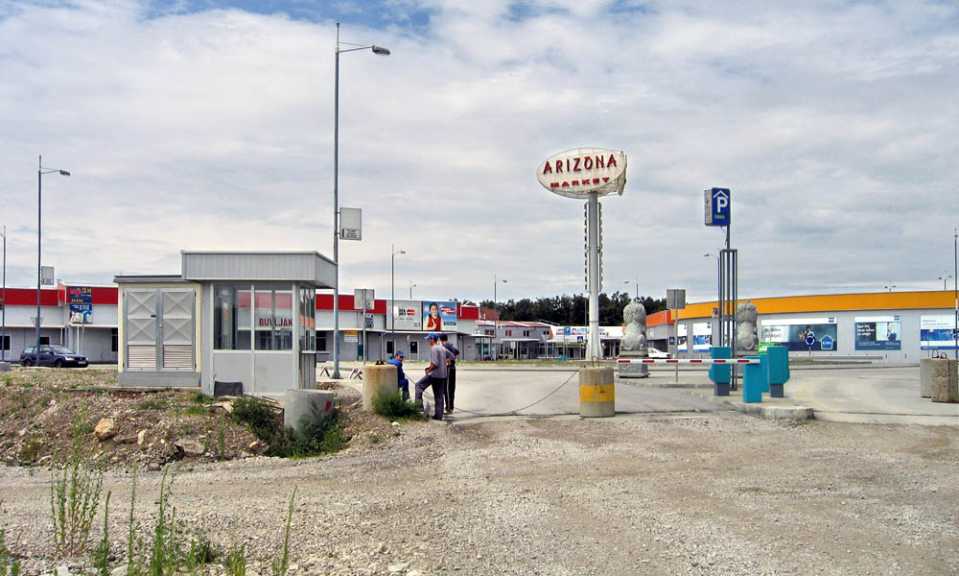
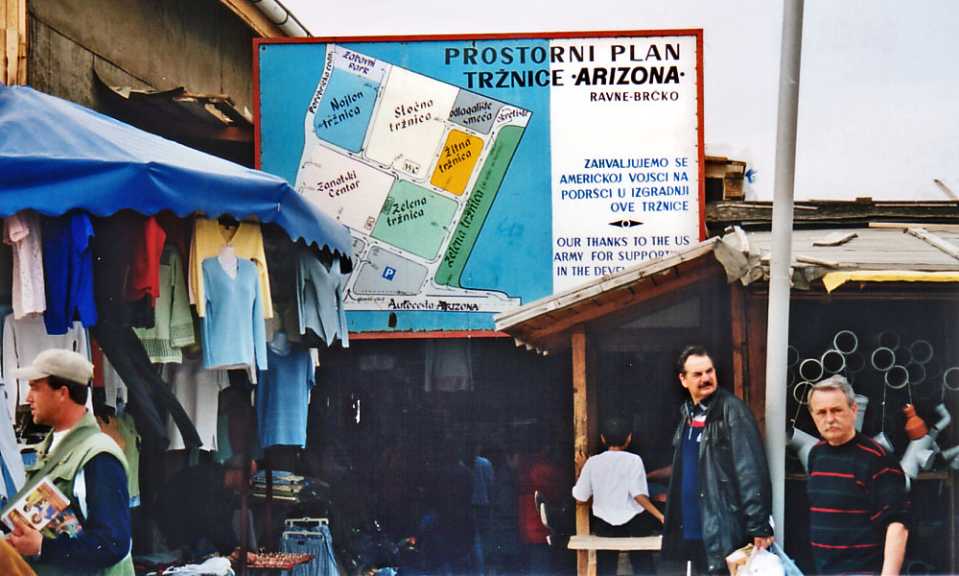
Entrance to bazaar-like heart of the market in 2001
Warehouse structures erected by Italproject now housing the new indoor markets
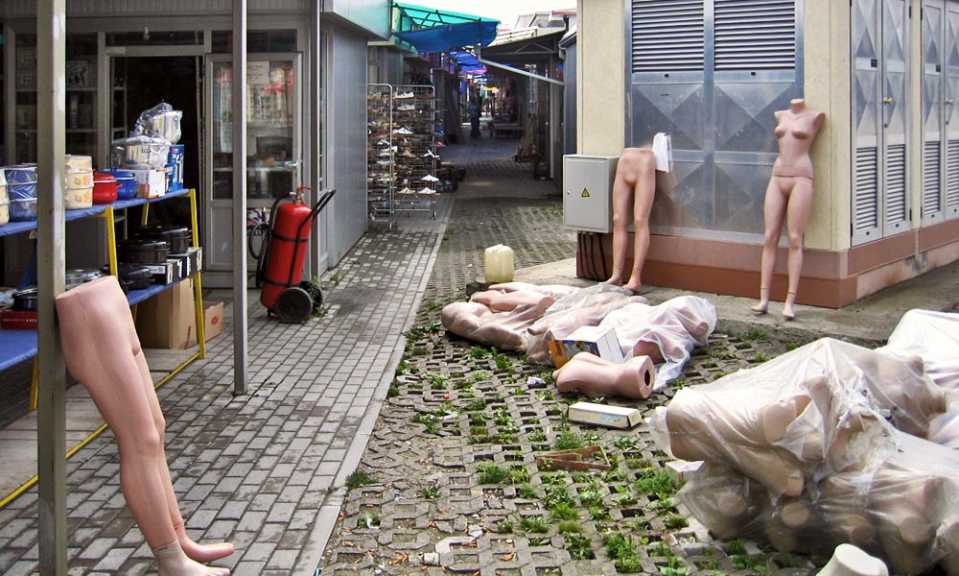
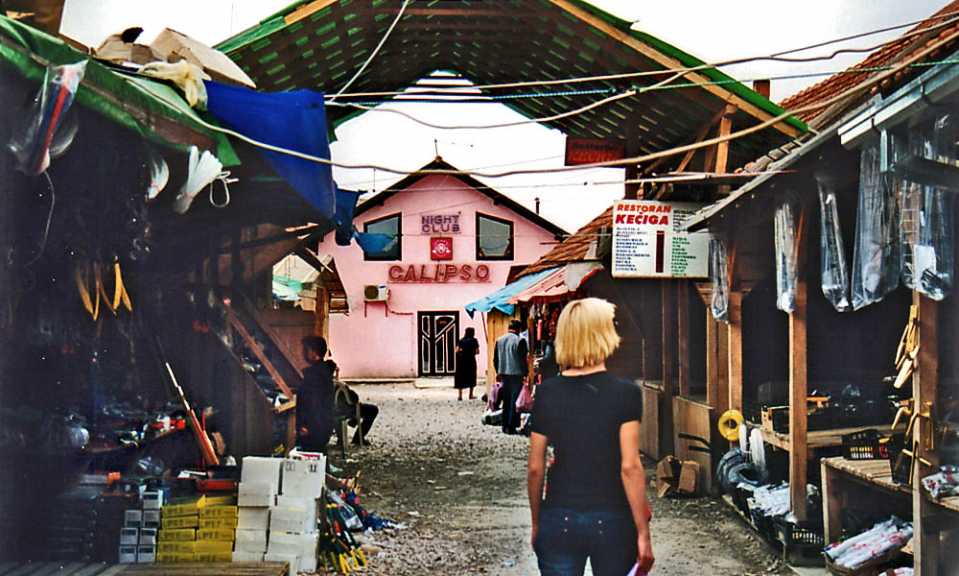
One of the nightclubs at Arizona Market in 2001
Less frequented warehouses partly used as sleeping quarters for Asian workers
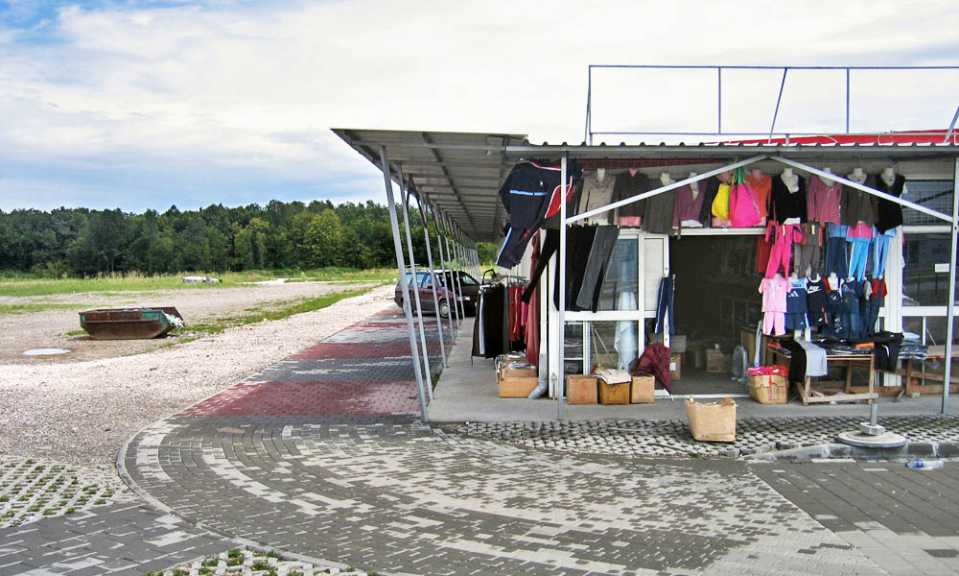
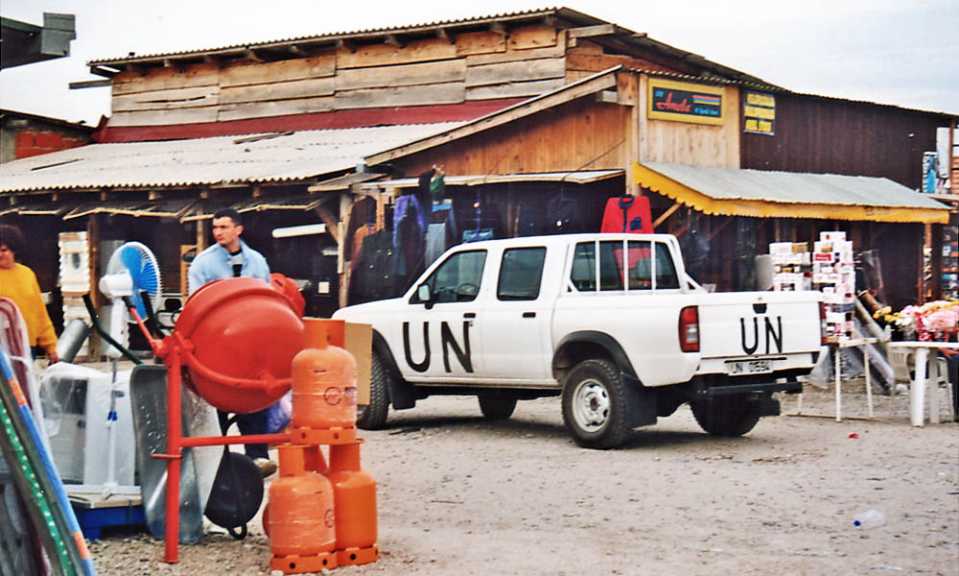
A UN vehicle at the market in 2001
Commercial development where building the facade is part of the individual fit-out
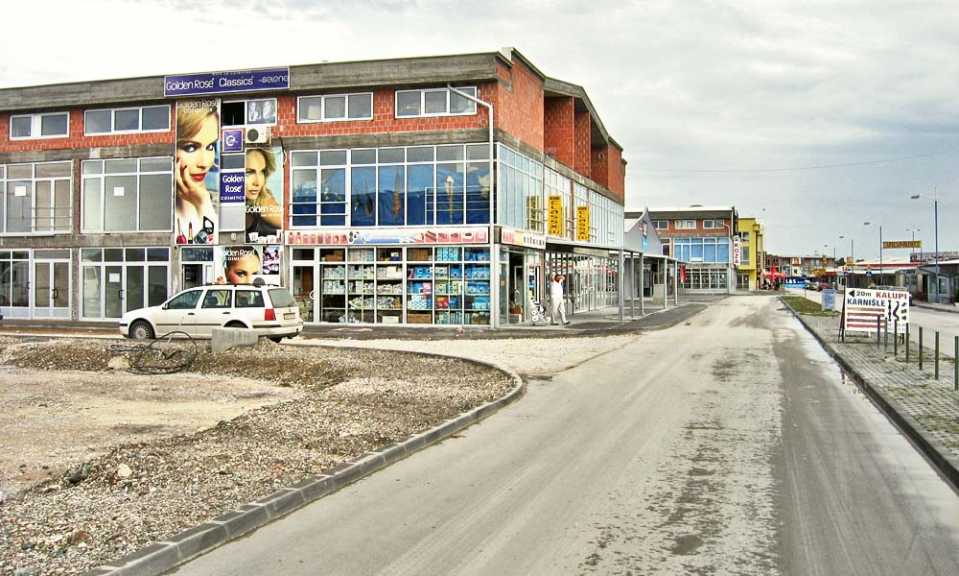
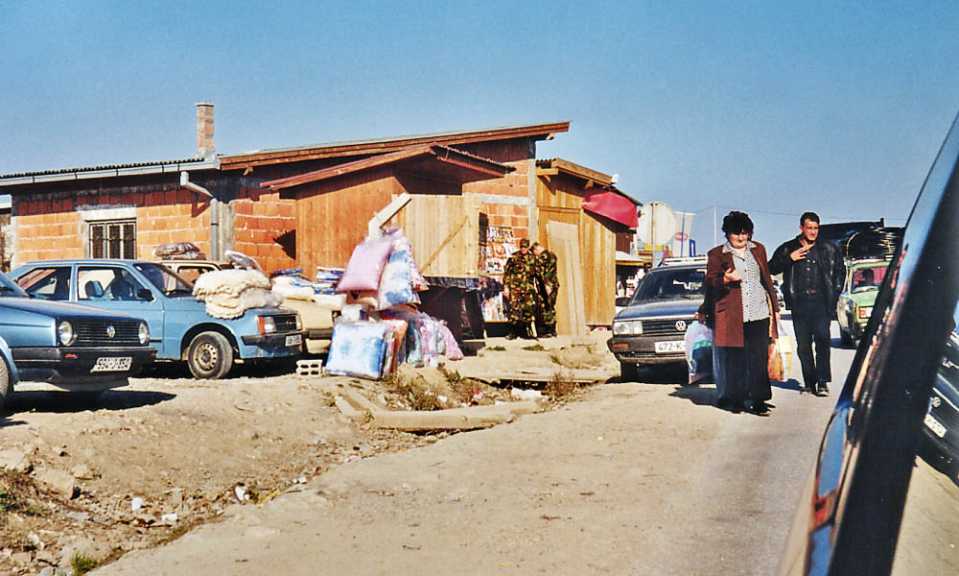
Members of the International Community browsing magazines in 2001
The strip of land occupied by the present Arizona Market is a part of the war zone that was fiercely fought over by Serbian, Croatian and Bosnian Muslim units because of its strategic position after Bosnia-Herzegovina had left the federal state of Yugoslavia in 1991. The Dayton Peace Accords of November 1995 granted special status to this disputed territory around the town of Brčko, whose future was to be decided in an international arbitration process. It was placed under the direct supervision of a special supervisor from the Office of the High Representative (OHR) of the international community of states for Bosnia and Herzegovina.
Soon after the local checkpoint at the Arizona Corridor (the code name given to the north-south passage between Bosnia and Croatia by the IFOR/SFOR troops) had evolved into an informal meeting place where cigarettes and cattle were traded and coffee was served at the roadside. It is said, that in 1996 the local commander decided to encourage initial encounters between members of the different ethnic communities by establishing a ‘free-trade zone’, thereby contributing to consolidating peace. SFOR soldiers levelled several hectares of farmland, cleared the mines and supplied building materials. In next to no time, the largest informal market for goods in Southern Europe arose on the opposite side of the road to the checkpoint: with wooden huts, improvised stalls, smuggled goods and bootleg versions of brand-name goods. Textiles, food, electronic products, building materials, cosmetics, car accessories and CDs could all be purchased at favourable prices there.
read more...
read more...
read more...
read more...
read more...
read more...
read more...
read more...
read more...
read more...
read more...
read more...
read more...
read more...